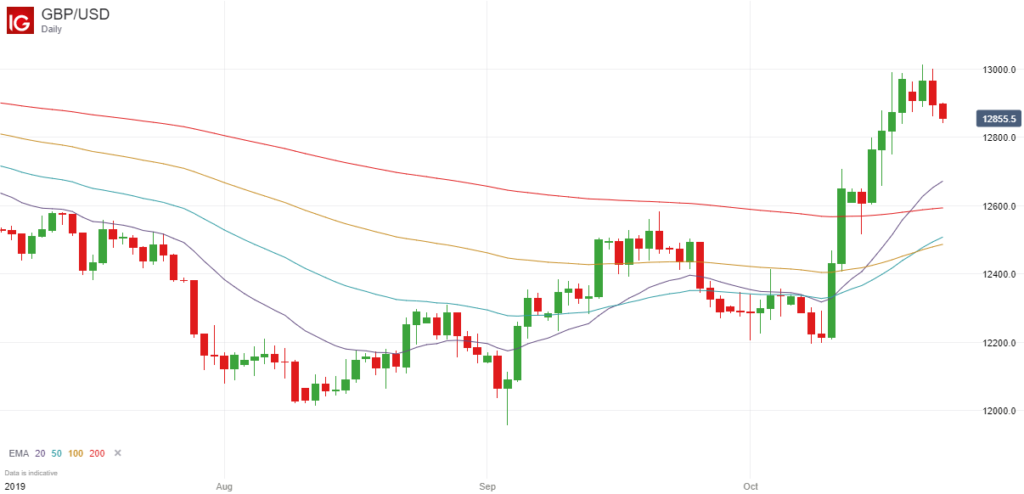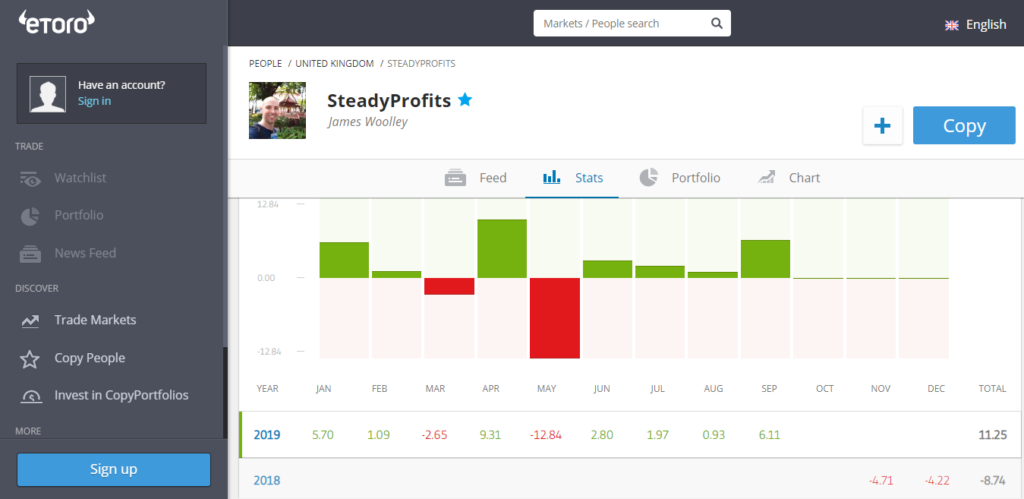Long-Term Depreciation
Any of my readers who live in the UK will know just how much the pound has fallen in value against the dollar in the last few years.
In fact it has fallen sharply against many other currencies as well, as you may well have noticed if you have spent your holidays in another country just recently.
Take the Thai baht, for example. One pound used to get you over 50 baht, but as of right now it won’t even buy you 40 baht.
Recent Price Action
The good news is that the pound has started to recover as hopes were raised that we might finally get a Brexit agreement, and not crash out of the European Union without a deal, as previously feared.
The story seems to change every day, but at the time of writing, it now looks like we won’t be leaving the EU on 31 October and there will either be a delayed leave date to scrutinise the Brexit deal more closely, or a general election to resolve any differences between the main parties and get a clear majority.
As a result of this, the pound has rallied off its lows and having traded just under 1.20 at the start of September and as low as 1.22 at the start of this month, it has now pushed on towards the significant 1.30 level.
I say significant because traders seem to play close attention to the reaction of the price when it reaches these key levels on the charts, and will then make their trading decisions accordingly.
Strong Resistance
At the moment the price of the GBP/USD appears to be struggling to break through this 1.30 level, as you can see from the daily price chart below:

On 17 October it posted a high of 1.2990 before falling back down again to close at 1.2873, and then on the following three trading sessions it posted daily highs of 1.2988, 1.3013 and 1.3001 respectively, but failed to actually close above 1.30 on each occasion.
More significantly, after last night’s parliamentary vote where they approved the Brexit deal but voted to ask for an extension from the EU, the GBP has started to turn downwards once again as the chances of an orderly departure in the coming weeks essentially disappear and uncertainty reigns once again.
Future Price Moves
Looking at the price chart above, you can see that the short-term 20-day exponential moving average has already crossed above the 200-day moving average, and if the price can stay around these levels for the next few weeks, it looks inevitable that the 50 and 100-day EMA will also cross above the 200-day EMA.
Therefore from a purely technical perspective, you would think there is real potential for the price to eventually break above the 1.30 level and start to trade within a new trading range of 1.30 – 1.40 rather than 1.20 – 1.30.
It wouldn’t take much of a catalyst to make this happen either because if we do finally come to an agreement in the coming months, or do actually leave on 31 January 2020, as some people are predicting, the pound has the potential to rise quite sharply, and I would predict that it could even move back towards the 1.50 level at some point in the next year or two.
